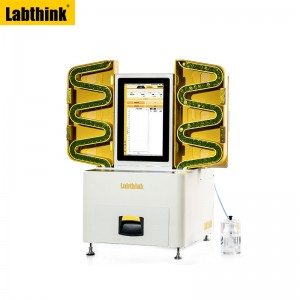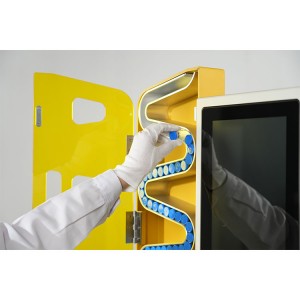Micro Leak Testing of Vials and Ampoules: Ensuring Packaging Integrity in the Pharmaceutical Industry
In the pharmaceutical industry, the integrity of packaging is paramount to ensure that sterile products remain free from contamination and degradation. Micro leak testing of vials and ampoules is a critical quality control process, especially for injectable drugs, vaccines, and biologics, where even a small leak can compromise the safety and efficacy of the product. The need for highly sensitive, non-destructive testing methods to detect micro leaks has become increasingly important.
This article discusses the importance of micro leak testing, the methods available, and the advanced technologies used in the testing of vials and ampoules to ensure packaging integrity.
Why is Micro Leak Testing Important for Vials and Ampoules?
Vials and ampoules are widely used for packaging injectable pharmaceuticals and biologics, which require a sterile barrier to maintain their safety and potency. A single micro leak can lead to several significant issues, including:
- Contamination Risk: Leaks can allow bacteria, fungi, or other microorganisms to enter the product, rendering it unsafe for use.
- Loss of Product Integrity: Even small leaks can allow moisture or oxygen to enter, affecting the chemical stability of the drug.
- Regulatory Compliance: Pharmaceutical packaging must meet strict standards, such as USP <1207> for packaging integrity testing, ensuring the product is sealed properly.
- Shelf Life: Proper sealing ensures that the product maintains its efficacy until it reaches the end-user.
By detecting and eliminating micro leaks, manufacturers can guarantee the safety, stability, and regulatory compliance of their products.
Methods for Micro Leak Testing of Vials and Ampoules
Micro leak testing requires precision, sensitivity, and non-destructive methods to detect leaks without damaging the product. Several techniques are employed in the industry for micro leak testing:
1. Vacuum Decay Testing
Principle: This method involves placing the vials or ampoules in a vacuum chamber and measuring the rate of vacuum decay caused by air or fluid leakage.
- Advantages:
- Non-destructive: The sample is not damaged during testing.
- Highly sensitive: Can detect leaks as small as 5 μm.
- Fast: Provides results quickly, making it ideal for production line testing.
- Applications: Widely used for testing sealed vials, ampoules, and blister packs.
2. Helium Leak Detection
Principle: A helium gas tracer is introduced into the package, and the sample is monitored for any helium escaping from micro leaks.
- Advantages:
- Extremely sensitive: Capable of detecting leaks at a sub-micron level.
- Ideal for critical applications: Commonly used for high-value biologics, vaccines, and sensitive drugs.
- Applications: Primarily used for testing highly critical packaging, such as in the biopharmaceutical and vaccines industries.
3. High Voltage Leak Detection (HVLD)
Principle: HVLD applies high-voltage electrical conductivity to detect micro leaks in non-conductive materials. If there is a small leak, the electrical current flows through the defect, indicating a breach.
- Advantages:
- Non-invasive: Does not require physical contact or destruction of the sample.
- Precise: Detects even the smallest pinhole leaks.
- Applications: Used for glass ampoules, vials, and prefilled syringes, particularly in pharmaceutical and medical packaging.
4. Laser-Based Headspace Gas Analysis
Principle: This technique involves the use of laser technology to measure the concentration of gases like oxygen, carbon dioxide, or moisture in the headspace of the container. Any variation in gas levels can indicate a leak.
- Advantages:
- Non-destructive: Does not alter the sample.
- Real-time monitoring: Can detect leaks during production in real-time.
- Applications: Useful for lyophilized vials, sterile injectables, and sensitive biologics.
Labthink’s Advanced Leak Detection Solutions
Labthink offers advanced solutions for micro leak testing in pharmaceutical packaging, including their C690H Non-Destructive Leak Detector, which uses vacuum decay technology. This system is specifically designed to ensure the integrity of vials, ampoules, and other pharmaceutical containers.
Features of the Labthink C690H Leak Detector:
- High Sensitivity: Detects micro leaks as small as 5 μm.
- Non-destructive testing: The packaging is not damaged, ensuring it can still be used.
- Fast and efficient: Provides real-time results for high-throughput environments.
- Data Logging and Reporting: Automatically records test data for traceability and compliance with regulatory standards.
- Versatile: Suitable for various container types, including ampoules, vials, and blister packs.
Applications of Micro Leak Testing for Vials and Ampoules
- Pharmaceutical Industry: Ensuring the integrity of vials, ampoules, and prefilled syringes containing injectable medications, biologics, or vaccines.
- Biopharmaceuticals: Protecting sensitive drugs, such as monoclonal antibodies, from contamination and degradation due to leaks.
- Medical Devices: Validating the sealing integrity of medical packaging, including prefilled syringes, IV bags, and other injectable devices.
- Regulatory Compliance: Meeting strict FDA and EU GMP requirements for packaging integrity in the pharmaceutical industry.
- Research and Development: Used in laboratories to validate packaging for experimental drugs, ensuring reliable, contaminant-free results.
Conclusion
Micro leak testing of vials and ampoules is critical for ensuring the safety, sterility, and effectiveness of pharmaceutical products. With advanced technologies like vacuum decay testing, helium leak detection, and high voltage leak detection, manufacturers can guarantee the integrity of their packaging without compromising the product.
Labthink’s C690H Non-Destructive Leak Detector offers an ideal solution for non-destructive, high-sensitivity leak testing, helping pharmaceutical companies maintain product safety and meet regulatory standards. By investing in precise leak detection technology, manufacturers can ensure that their packaging maintains its protective barrier, preserving the quality and efficacy of their products throughout their shelf life.
For more information or to schedule a demo, contact Labthink today to explore advanced leak detection solutions for pharmaceutical packaging.




